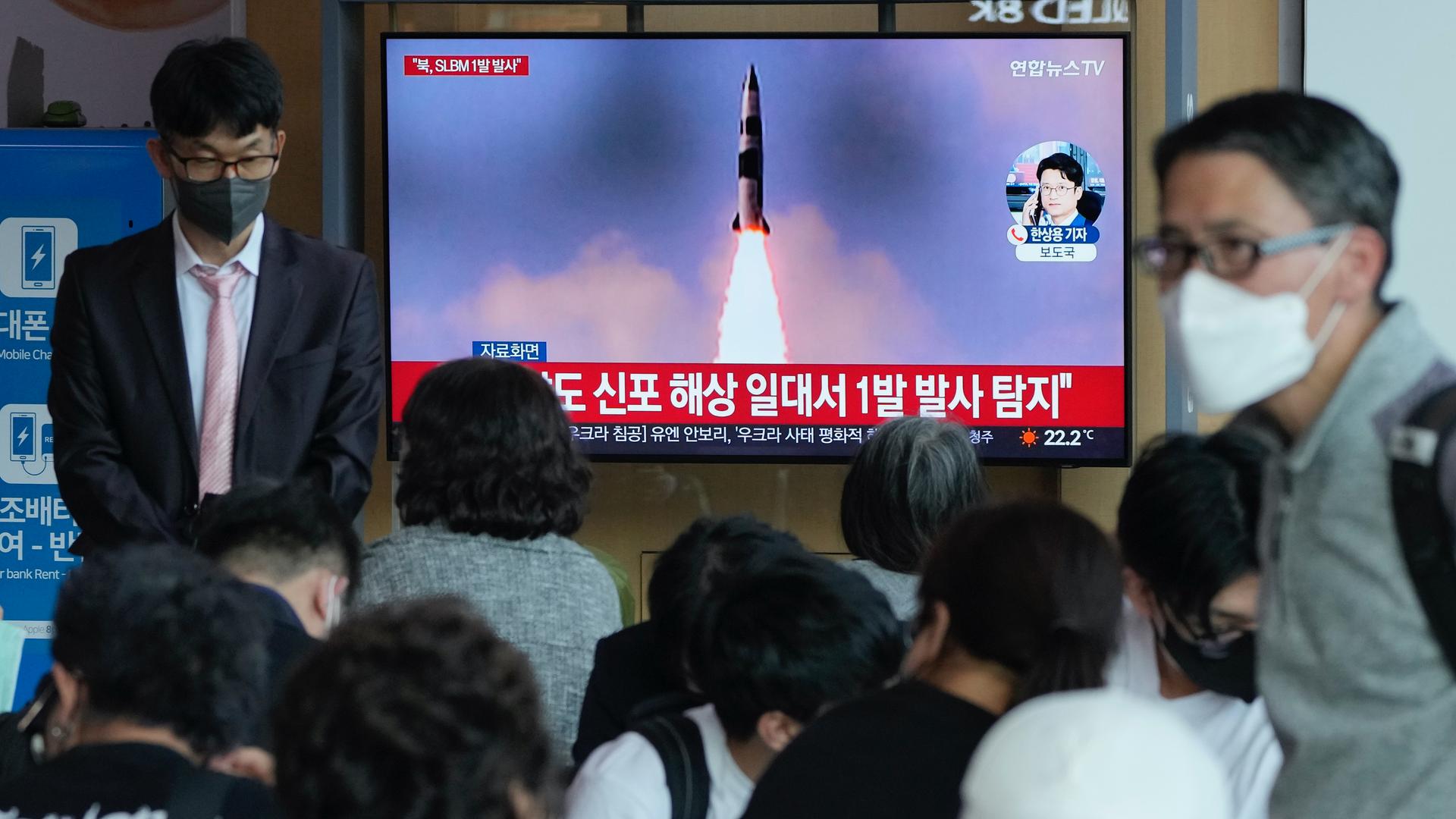Japan gears up for evacuation drills amid spate of North Korean missile tests
North Korea flight-tested a ballistic missile that was likely fired from a submarine on Saturday, South Korea’s military said, continuing a streak of weapon tests that could culminate with a nuclear test in the coming weeks or months.
Before that, on Wednesday, South Korean and Japanese militaries detected a suspected ballistic missile fired from near the capital, Pyongyang.
Both exercises come ahead of the inauguration on Tuesday of South Korean President-elect Yoon Suk-yeol, who has vowed to take a tougher approach over the North’s nuclear ambitions.
So far this year, North Korea has fired missiles 15 times, including the country’s first test of an intercontinental ballistic missile since 2017, in March, which demonstrated the capability to reach as far as the United States.
In response, Japan is gearing up to restart missile evacuation drills this summer.
The recent spate of North Korean missile tests is déjà vu for many people in Japan.
Back in August of 2017, residents woke up to an ominous alert, reminiscent of an air raid, warning people to take shelter from a passing North Korean intercontinental ballistic missile.
In the northernmost island of Hokkaido, residents practiced ducking and covering their heads. They are told to evacuate to a sturdy building and keep away from windows.
North Korea has been clearly exploiting a favorable environment to push forward its weapons program with the UN Security Council divided and effectively paralyzed over Russia’s war on Ukraine.
Related: How governments finance the ruin of our oceans
The unusually fast pace in testing activity underscores a brinkmanship aimed at forcing the United States to accept the idea of the North as a nuclear power and remove crippling sanctions, experts say.
At an April 25 parade, North Korean leader Kim Jong-un vowed to speed up the country’s nuclear weapons development, putting Japan, South Korea and the United States in a direct line of attack.
Hiroki Takeuchi is associate professor of political science at Southern Methodist University in Texas. He said that while Japan has good defense capabilities, it is not prepared against multiple missiles.
“So, the real capability comes from the ability of launching multiple missiles at the same time. And I think it still takes time for North Korea to develop that capability.”
Under the US-Japan Security Alliance, Takeuchi said, the United States is committed to defending Japan.
James Acton is a physicist and co-director of the Nuclear Policy Program at the Carnegie Endowment for International Peace.
He said that he’s not sure the US is ready.
“In terms of [US] homeland missile defenses, they have not performed all that well in testing. And moreover, testing was not realistic. So, I believe even with North Korea’s older ICBMs [intercontinental ballistic missiles], it still would have been able to penetrate US defenses. But [North Korea is] clearly taking measures to increase its likelihood of penetrating those defenses.”
Acton said that North Korea’s weapons development is believed to exploit gaps in the US arsenal. But it doesn’t mean its technology is entirely reliable.
“The US will test a new missile 10, 20, 30 times before it’s ready to deploy because it wants to know it’s really, really reliable. North Korea doesn’t demand that same level of reliability. You know, it’s often content just to see one successful test before it deploys a system.”
“The US will test a new missile 10, 20, 30 times before it’s ready to deploy because it wants to know it’s really, really reliable,” he said. “North Korea doesn’t demand that same level of reliability. You know, it’s often content just to see one successful test before it deploys a system.”
North Korea appeared to be more than content in showcasing its latest monster missile.
On March 25, North Korea unveiled a dramatic, Hollywood-style propaganda video showing leader Kim Jong-un, clad in a leather jacket and sunglasses, walking in front of the massive “monster” missile.
Related: Netflix’s ‘Old Enough!’ reality TV show sends very young kids on errands by themselves
Acton said that he thinks that the video was staged.
“North Korea appears to have done two attempted full-scale ICBM tests this year,” he said. “But I’ve got to say, the first one appears to have been the new monster missile. The second one appears to have been an older ICBM, but still a real ICBM.”
Political scientist Hiroki Takeuchi said that ties between Japan and South Korea may undergo a diplomatic reset, which could prove a deterrent against North Korean provocation.
“The recent statement from the new president of South Korea for changing or improving South Korea-Japan relations is a very good, good sign for both Japan and South Korea to prepare for North Korea’s threat.”
Takeuchi said that the new president of South Korea could play a role in forging a trilateral alliance with the United States.
The Associated Press contributed to this report.
